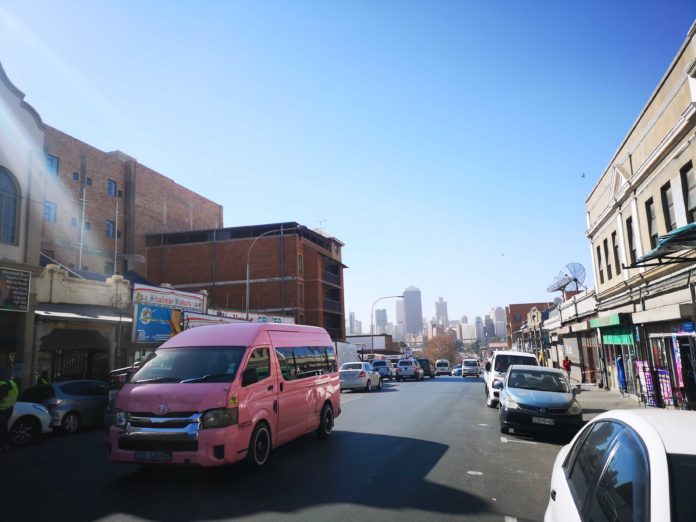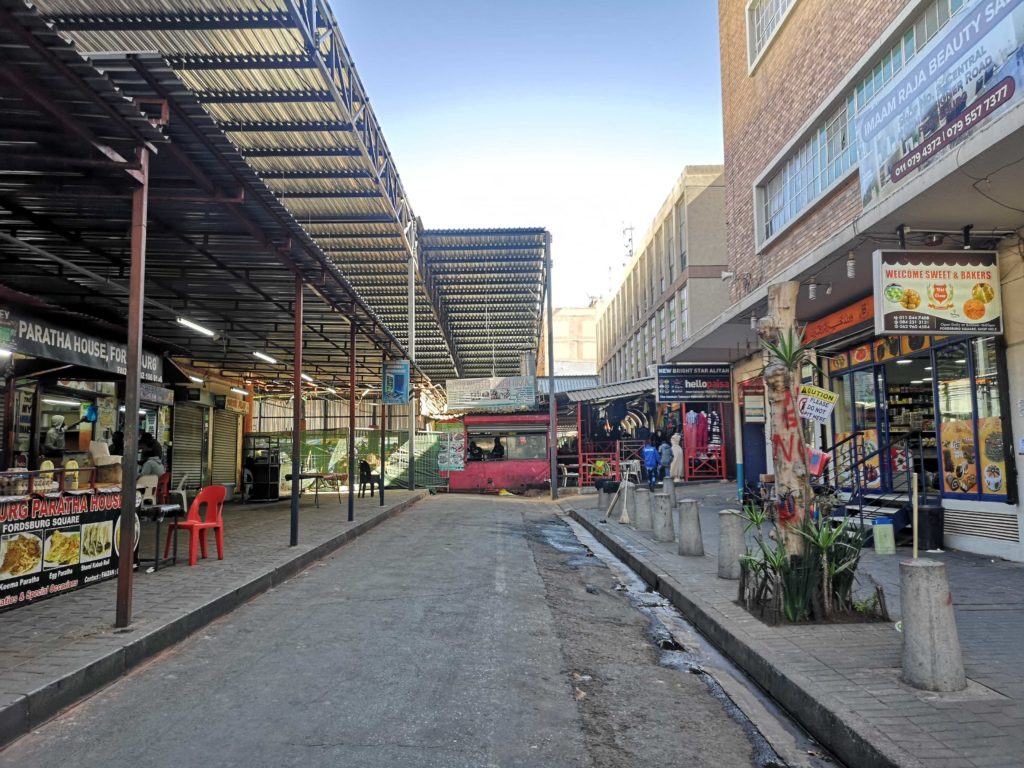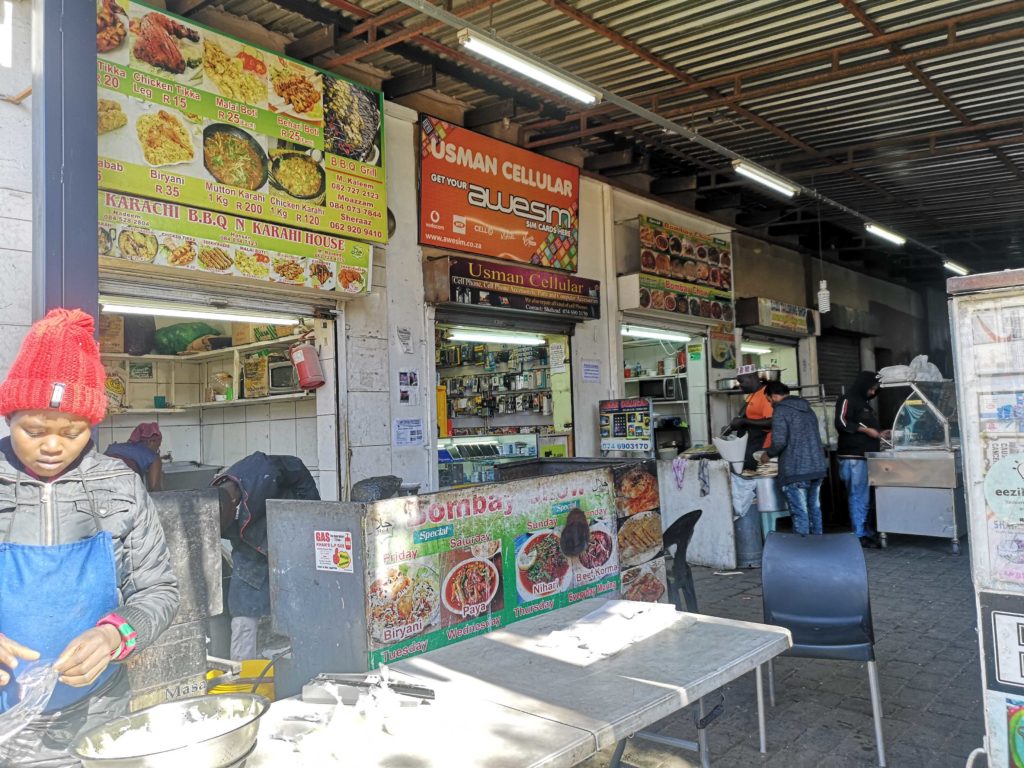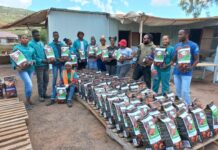PART I
Growing up as Indian South African, Fordsburg was the place to buy halaal meats, spices, jewellery and beautiful fabrics. It was also the place to eat out because it had the biggest concentration of halaal restaurants. In the past decade, Fordsburg has evolved and been repurposed, virtually unrecognisable to the Fordsburg of my childhood. Today, it has become a melting pot of various immigrant communities.
Architect and heritage practitioner Yasmin Mayet grew up in Fordsburg, and completed a heritage Masters about built environments on the area. “The big thing for me was to look back at my own heritage, and through that I uncovered all these layers into Fordsburg,” Mayat said in an interview with The Daily Vox.
Named after Lewis Peter Ford of the Jeppe and Ford Estate Company, Fordsburg was built on the outskirts of the Johannesburg gold reef to house miners. The multi-ethnic suburb has a fascinating and turbulent history. “Fordsburg was always a working class suburb,” Mayat said. She explains the evolution of Fordsburg in three stages: during the Witwatersrand Gold Rush in the 1880s until after the 1922 Rand Rebellion, from the 1920s until the fall of the apartheid, and the post-apartheid era.
Stage one: White working class settles in Fordsburg (1880s-1920s)
Between the 1880s-1920s, Fordsburg was mostly a white working class suburb but also housed people of diverse ethnicities. “It was quite close to a lot of mines and the town itself, so it always had mixed residents. There was a big Jewish population and, because of [the proximity to former Malay, Chinese, Indian, coloured suburbs] Pageview and Fietas, there was a bit of overspill of Asian, Indian, coloured populations. But a lot of it was people who supplemented the mining industry and the workers themselves. There were also a lot of poor Afrikaans people who came from rural areas to find jobs,” Mayat said.
One thing that has remained constant throughout the evolution of the area is the presence of immigrants. The Jewish folk were immigrants, and the mining population were an amalgamation of Scottish, Irish, or those who migrated from other Gold Rushes.
Then the 1922 Rand Rebellion happened. This rebellion (led partially by communists) saw white miners taking up arms, pressuring mining capital and the state to backtrack on policy of saving on labour costs by employing black people in positions previously reserved for them. The miners barricaded themselves in Fordsburg but state forces then bombed them into submission. The aftermath of the Rand Rebellion saw an influx of South African Indians.
Stage two: Mixed communities fight to live in Fordsburg (1920s-1990s)
“Fordsburg has always had changes in the types of communities who had been there, it’s always been a transient area,” Mayat said. This is because, Mayat explains, the nature of working class areas is that as people fare better economically they move to better parts of the city.
From the 1920s, Indians, Chinese, and coloured people populated Fordsburg. It wasn’t long before the apartheid government’s infamous Group Areas Act in the 1950s declared Fordsburg a ‘whites only’ suburb, in part because of the mixing of races, but also because the suburb was considered too well placed to the city centre.
The apartheid government forcibly moved some of Fordsburg’s Indian residents to the Lenasia township, located in the south of the city. The community resisted. When Fordsburg shopkeepers protest against the forced removals peaked in the 1970s, apartheid authorities acquiesced, allowing Indian traders from to own businesses in Fordsburg, provided that they were situated near the newly-built shopping centre Oriental Plaza.
“That’s the Fordsburg that many Indian people reminisce about,” Mayat said. When the Indian South Africans moved in, they built and repurposed many buildings, including schools, shops, and mosques, still found and used in the Fordsburg area. But during the post-apartheid era, many South African Indians moved out. Then there was an influx of migrants from the international Muslim community, as we have now.
Stage three: International Muslim migrants set up shop in Fordsburg (1990s – present)
“Once the South African Indian community moved to better pastures, into other parts of Joburg, then the international community took their own place in the suburbs,” Mayat said.
Today the space has an eclectic mixture of people who have moved to Fordsburg from all over the world. There are Syrians, Turks, Somalis, Palestinians, Ethiopians, Egyptians, Jordanians, Pakistanis, and Indians who live and work in the area. Many of these people have set up shop selling hookah pipes, clothing, incense sticks, natural skincare products, and more. Others have opened up restaurants where you can sample their most delicious cuisines.
One thing that has remained constant in Fordsburg is the market square. Mayat says she’s glad it’s retained its use and hasn’t been privatised or built on. Since the Gold Rush, the space has retained its purpose as a trading area. Today, you can buy anything from fancies and fripperies to the most delicious sugarcane juice or a spicy chicken tikka from vendors on the market square.
Market Square, Fordsburg (2019). Picture by Shaazia Ebrahim. Vendors sell food at the Market Square, Fordsburg (2019). Picture by Shaazia Ebrahim.
But the buildings have become dilapidated and the area is not at well-kept as it used to be.
Preserving spaces with historic and cultural significance
As a working class suburb, Fordsburg always housed transient communities. In Mayat’s Master’s thesis, she looked at the cultural significance of buildings and the built fabric. “I was looking at why places are important to people, or they aren’t. People build buildings for a reason, for religious purposes, or commercial purposes or residential. But when a community moves, their values and the things that are important to them also move. Those buildings no longer have the same significance to the new population,” she said.
Besides, a lot of the communities living in Fordsburg today are still transient, Mayat explains. “Not all the people in those communities necessarily see Fordsburg or South Africa as their home. It’s often a stepping stone to other parts. If something doesn’t have any value to you you’re not going to preserve or even maintain it,” she said.
The City of Joburg can put specific buildings on a heritage register. This means people can’t demolish or change the buildings, Mayat said. However, the City relies on communities to highlight these buildings, so it can put laws in place to look after the building or prevent them from being demolished.
While some might want to preserve areas in Fordsburg, others might not. Some moved to Fordsburg after the apartheid government threw them out of areas because of the Group Areas Act. Others had to move from Fordsburg. “It didn’t have the most positive connotations to older generations. Sometimes, people are ready to move on, it’s hard to reminisce on dark history. South Africa is full of that,” Mayat said.
Read Part II of the series on Fordburg’s culinary gems, and Part III where we spoke to Pakistani dessert-makers.











